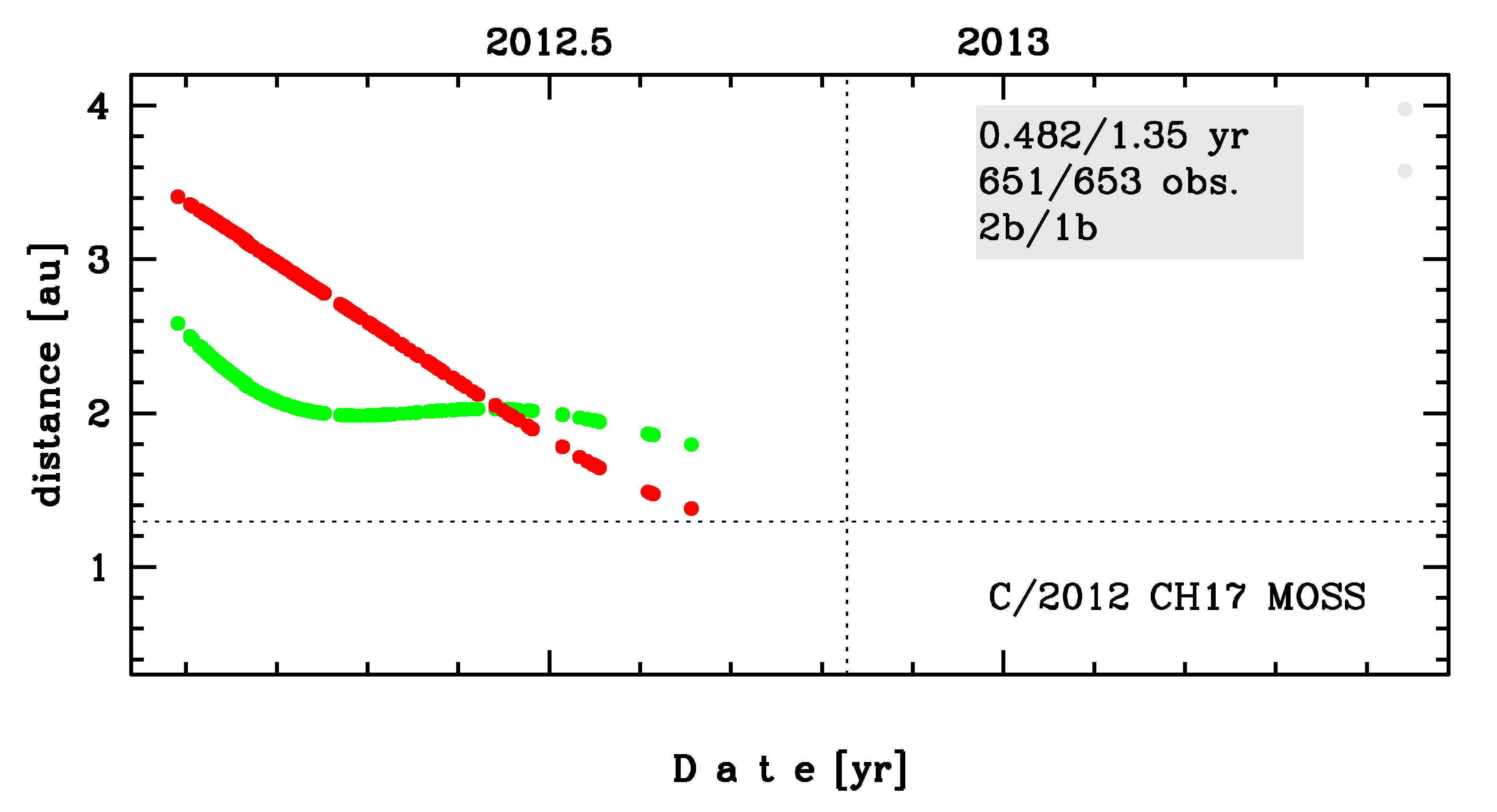C/2012 CH17 MOSS
more info
Comet C/2012 CH17 was discovered on 7 February 2012 with Morocco Oukaimeden Sky Survey (MOSS), that is almost 7.5 months before its perihelion passage. Next, a few prediscovery images taken on 2 February 2012 with Catalina Sky Survey were found. After perihelion passage, it was observed only on 10 June 2013.
Comet had its closest approach to the Earth on 24 September 2012 (1.737 au), 4 days before its perihelion passage.
Solution given here is based on data spanning over 1.35 yr in a range of heliocentric distances: 3.41 au – 1.296 au (perihelion) – 3.58 au.
According to preferred solution, this Oort spike comet suffers tiny planetary perturbations during its passage through the planetary system (see original and future barycentric orbits).
See also Królikowska 2020.
Comet had its closest approach to the Earth on 24 September 2012 (1.737 au), 4 days before its perihelion passage.
Solution given here is based on data spanning over 1.35 yr in a range of heliocentric distances: 3.41 au – 1.296 au (perihelion) – 3.58 au.
According to preferred solution, this Oort spike comet suffers tiny planetary perturbations during its passage through the planetary system (see original and future barycentric orbits).
See also Królikowska 2020.
| solution description | ||
|---|---|---|
| number of observations | 651 | |
| data interval | 2012 02 02 – 2012 08 27 | |
| data arc selection | data generally limited to pre-perihelion (PRE) | |
| range of heliocentric distances | 3.41 au – 1.38au | |
| type of model of motion | NS - non-gravitational orbits for standard g(r) | |
| data weighting | YES | |
| number of residuals | 1288 | |
| RMS [arcseconds] | 0.54 | |
| orbit quality class | 2b | |
| orbital elements (heliocentric ecliptic J2000) | ||
|---|---|---|
| Epoch | 2012 09 30 | |
| perihelion date | 2012 09 28.17134827 | ± 0.00958384 |
| perihelion distance [au] | 1.29676442 | ± 0.00012169 |
| eccentricity | 0.99937053 | ± 0.00013463 |
| argument of perihelion [°] | 137.925021 | ± 0.010840 |
| ascending node [°] | 125.971870 | ± 0.004900 |
| inclination [°] | 27.745338 | ± 0.000612 |
| reciprocal semi-major axis [10-6 au-1] | 485.42 | ± 103.81 |
| non-gravitational parameters | ||
|---|---|---|
| A1 [10-8au/day2] | 43.588 | ± 7.615 |
| A2 [10-8au/day2] | 3.8838 | ± 2.2407 |
| A3 [10-8au/day2] | -4.3489 | ± 2.1679 |
| m | -2.15 | |
| n | 5.093 | |
| k | -4.6142 | |
| r0 [au] | 2.808 | |
| α | 0.1113 | |
